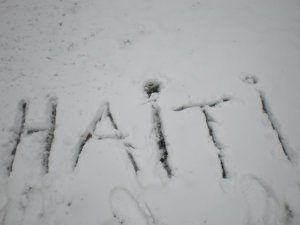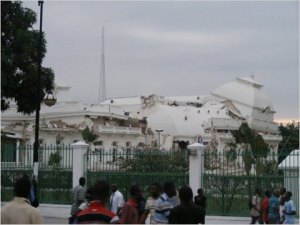

It was a momentuous day in Haiti today. Jean Bertrand Aristide whom the Americans ignominiously hustled out of Haiti seven years ago returned to the beleaguered island today. The late Jamaican columnist John Maxwell must be smiling. Here is an excerpt from his much quoted 26 Oct 2008 Observer column Haiti: Racism and Poverty:
The reason Haiti is in its present state is pretty simple. Canada, the United States and France, all of whom consider themselves civilised nations, colluded in the overthrow of the democratic government of Haiti four years ago. They did this for several excellent reasons:
• Haiti 200 years ago defeated the world’s then major powers, France
(twice) Britain and Spain, to establish its independence and to abolish plantation slavery. This was unforgivable.
• Despite being bombed, strafed and occupied by the United States early in the past century, and despite the American endowment of a tyrannical and brutal Haitian army designed to keep the natives in their place, the Haitians insisted on re-establishing their independence. Having overthrown the Duvaliers and their successors, the Haitians proceeded to elect as president a little black parish priest who had become their hero by defying the forces of evil and tyranny.
• The new president of Haiti, Jean Bertrand Aristide refused to sell out
(privatise) the few assets owned by the government (the public utilities mainly);
• Aristide also insisted that France owed Haiti more than $25 billion in repayment of blood money extorted from Haiti in the 19th century, as alleged compensation for France’s loss of its richest colony and to allow Haiti to gain admission to world trade;
• Aristide threatened the hegemony of a largely expatriate ruling class of so-called ‘elites’ whose American connections allowed them to continue the parasitic exploitation and economic strip mining of Haiti following the American occupation.
• Haiti, like Cuba, is believed to have in its exclusive economic zone, huge submarine oil reserves, greater than the present reserves of the United States
• Haiti would make a superb base from which to attack Cuba.
The American attitude to Haiti was historically based on American disapproval of a free black state just off the coast of their slave-based plantation economy. This attitude was pithily expressed in Thomas Jefferson’s idea that a black man was equivalent to three fifths of a white man. It was further apotheosized by Woodrow Wilson’s Secretary of State, William Jennings Bryan who expostulated to Wilson: “Imagine! Niggers speaking French!”
The Haitians clearly did not know their place. In February 2004, Mr John McCain’s International Republican Institute, assisted by Secretary of State Colin Powell, USAID and the CIA, kidnapped Aristide and his wife and transported them to the Central African Republic as ‘cargo’ in a plane normally used to ‘render’ terrorists for torture outsourced by the US to Egypt, Morocco and Uzbekistan.
A link to photos showing Aristide aboard a South African plane shortly before heading off to Haiti were tweeted by Haitian journalist Jacqueline Charles. This was her tweet:
For all who refused to believe til they saw photos of #Aristide on the plane en route to #Haiti.
Danny Glover, the well-known American actor flew all the way to South Africa to accompany Aristide back to Haiti. Apparently the two have been close friends for many years.
There is also another view of Aristide well articulated by Alex Dupuy. Read it to get a more complete picture of this unusual leader.
















